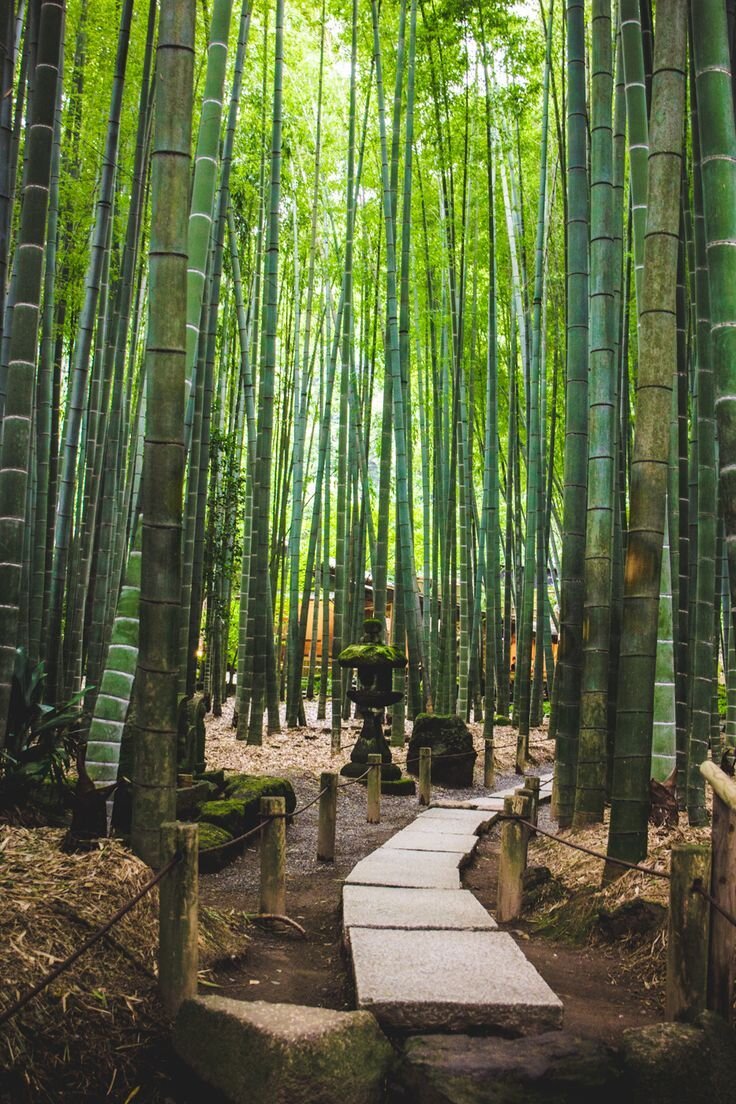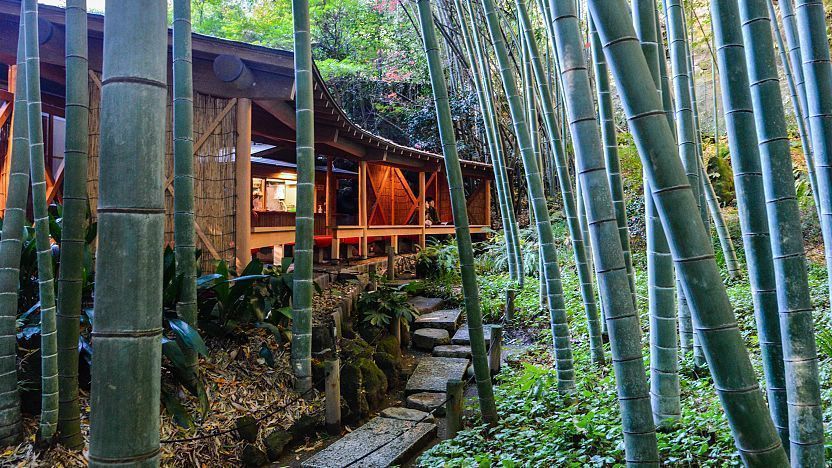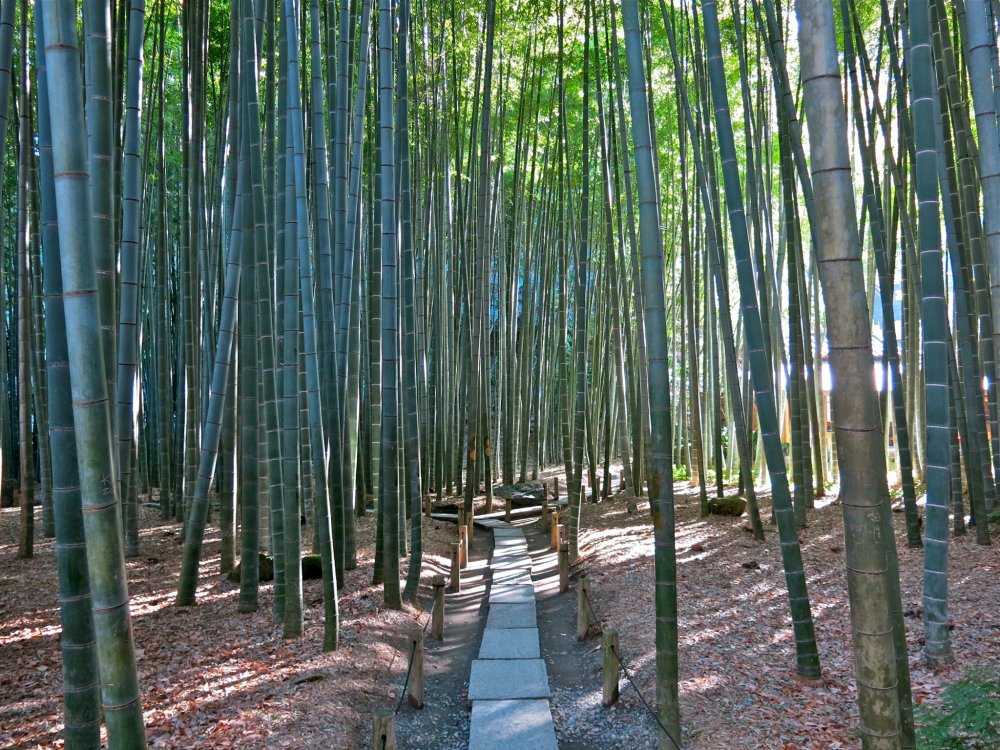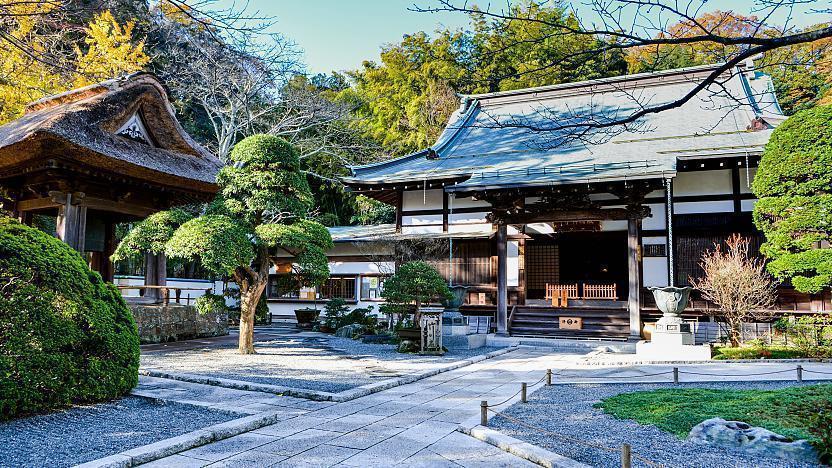Win a Free Trip to Japan!
Experience cherry blossoms and ancient temples
Nestled in the historic city of Kamakura, the Hokokuji Temple invites visitors to immerse themselves in tranquility and natural beauty. This hidden gem, renowned for its stunning bamboo grove, offers a unique blend of serene surroundings and rich cultural heritage. As you explore the temple’s architectural features and discover its historical significance, you will appreciate the peaceful atmosphere that envelops this sacred space. Whether you’re seeking solitude or a deeper understanding of Japanese culture, Hokokuji Temple Kamakura serves as a perfect retreat. Experience the harmony of nature and spirituality while visiting this remarkable site.
Historical Background of Hokokuji Temple
Hokokuji Temple Kamakura, established in 1334, stands as a significant landmark with deep historical roots. Founded by the Zen priest Tokiyori Uesugi, this temple serves as a testament to the spiritual and cultural evolution of Kamakura during the Kamakura period.
Key Historical Facts:
- Zen Buddhism Influence: Hokokuji Temple derives its philosophies from the Rinzai sect of Zen Buddhism, aiming to promote peace and mindfulness among visitors.
- Architectural Development: Originally, the temple featured simple structures, reflecting the minimalist aesthetic of Zen teachings. Throughout the years, it has undergone several renovations, yet it has preserved its serene ambiance.
- Bamboo Grove Introduction: The iconic bamboo grove was planted in the 18th century, symbolizing tranquility and resilience. Today, this grove provides a serene backdrop for meditation and contemplation.
Timeline of Key Events:
| Year | Event |
|---|---|
| 1334 | Establishment of Hokokuji Temple Kamakura |
| 18th Century | Introduction of the bamboo grove |
| Present Day | Recognized as a cultural heritage site |
In summary, the historical background of Hokokuji Temple Kamakura not only reflects its Buddhist roots but also captures the essence of Kamakura’s rich cultural tapestry. Today, it continues to attract visitors seeking a peaceful retreat amidst its historical significance.

Architectural Features of Hokokuji Temple Kamakura
Hokokuji Temple Kamakura stands out with its remarkable architectural features that reflect the tranquil spirit of Zen Buddhism. Established in 1334, this temple showcases distinctive elements that invite contemplation and peace.
Key Architectural Highlights:
- Main Hall (Hondo): The main hall exhibits a simple yet elegant design, predominantly made of wood. Its sloping roofs symbolize harmony, while the incorporation of natural materials resonates with Zen aesthetics.
- Bamboo Grove: Upon entering the temple grounds, visitors encounter a mesmerizing bamboo grove. This feature not only enhances the visual appeal but also provides soothing sounds as the wind rustles through the bamboo.
- Zen Gardens: The meticulously landscaped rock gardens offer a serene atmosphere. They embody the principles of Zen, encouraging mindfulness and reflection.
- Statues and Altars: Throughout Hokokuji Temple, intricate wooden statues and altars of Buddha demonstrate exquisite craftsmanship. These artworks amplify the spiritual ambiance and serve as focal points for meditation.
Comparison with Other Temples:
| Feature | Hokokuji Temple Kamakura | Other Notable Temples |
|---|---|---|
| Main Hall Design | Simple, wooden structure | Varied designs |
| Bamboo Groves | Extensive and serene | Limited or absent |
| Zen Gardens | Prominent | Varies per temple |
In summation, the architectural features of Hokokuji Temple Kamakura not only resonate with historical significance but also foster a deep sense of tranquility, making it a must-see destination for visitors seeking peace and reflection.
Significance of the Bamboo Grove
The bamboo grove at Hokokuji Temple Kamakura is more than just a picturesque sight; it represents a profound connection to nature and offers spiritual solace. Here are key aspects that highlight its significance:
- Symbol of Resilience: Bamboo, known for its flexibility and strength, serves as a powerful symbol of resilience in Japanese culture. This mirrors the spiritual philosophy encouraged by Hokokuji Temple Kamakura.
- Calm Atmosphere: As you stroll through the grove, the gentle rustling of bamboo leaves creates a tranquil soundscape. This ambiance promotes mindfulness, facilitating a deeper connection to one’s thoughts and surroundings.
- Aesthetic Appeal: The lush green stalks not only beautify the temple grounds but also frame the temple’s architecture in harmony with nature, enhancing the visitor experience.
- Cultural Heritage: Bamboo has significant historical ties to Japanese traditions. It features in art, literature, and spirituality, making the grove an embodiment of Japan’s cultural heritage.
Quick Comparison: Bamboo Grove vs. Other Temple Areas
| Feature | Bamboo Grove | Temple Grounds |
|---|---|---|
| Ambiance | Serene and quiet | Reflective yet busy |
| Symbolism | Resilience and life | Spirituality and tradition |
| Best for | Contemplation | Rituals and ceremonies |
In summary, the bamboo grove at Hokokuji Temple Kamakura not only contributes to the temple’s aesthetic charm but also serves as a vital space for reflection and cultural appreciation.
Activities to Enjoy at Hokokuji Temple Kamakura
Visiting Hokokuji Temple Kamakura offers more than just a glimpse into its stunning architecture; it’s a doorway to a world of peaceful activities that allow you to immerse yourself in its serene atmosphere. Here are some engaging activities to consider during your visit:
- Stroll Through the Bamboo Grove: As you walk through the towering bamboo, feel the tranquility envelop you. The gentle rustling of bamboo leaves enhances the sense of calm.
- Tea Ceremony Experience: Participate in a traditional Japanese tea ceremony within the temple grounds. This ritual offers insight into Japanese culture while allowing you to savor matcha amid nature’s beauty.
- Photography Opportunities: Capture the picturesque scenery of Hokokuji Temple Kamakura and its bamboo forest. Ideal lighting occurs during the early morning or late afternoon for stunning photos.
- Meditation Sessions: Find a quiet corner and practice meditation. The serene ambiance provides a perfect backdrop for mindfulness and reflection.
- Cultural Workshops: Join seasonal workshops such as calligraphy or floral arrangement inspired by traditional Japanese arts, which allow you to create memorable keepsakes.
These activities draw visitors closer to the essence of Hokokuji Temple Kamakura, enhancing your experience while fostering a deeper appreciation for its serene environment.

Best Times to Visit for Tranquility
Visiting Hokokuji Temple Kamakura can offer a peaceful retreat, but timing your visit can enhance the experience significantly. Here are the best times to enjoy tranquility at this serene destination:
-
Early Morning (7 AM – 9 AM)
Experience silence and solitude. Morning mist envelops the bamboo grove, creating a mystical atmosphere. The cool weather adds to the serene environment, perfect for meditation. -
Weekdays
If possible, plan your visit on a weekday. You’ll encounter fewer tourists, allowing you to explore the temple grounds and the stunning bamboo forest without interruption. -
Late Afternoon (3 PM – 5 PM)
As the sun begins to set, the soft golden light filters through the bamboo, creating a picturesque setting ideal for photography and contemplation. -
Seasonal Considerations
Different seasons offer unique perspectives:- Spring: Cherry blossoms add charm to your visit.
- Autumn: Vibrant fall colors enhance the beauty of the surroundings.
-
Avoid Peak Tourist Seasons
Try to avoid weekends and Japanese public holidays, as these tend to attract larger crowds.
By choosing the right time to visit Hokokuji Temple Kamakura, you can fully immerse yourself in its tranquil beauty and find peace amidst nature.
Exploring Surrounding Gardens and Nature
At Hokokuji Temple Kamakura, the natural surroundings create a serene atmosphere that enhances the spiritual experience. The temple is not just renowned for its historical significance but also for its beautiful gardens and lush landscapes that invite visitors to immerse themselves in nature. Here are some notable features:
- Bamboo Grove: This enchanting grove, consisting of over 2,000 bamboo stalks, offers a magical experience. Walking through the grove provides a soothing sound, as the wind rustles the leaves, which truly captures the essence of tranquility.
- Zen Gardens: The temple features meticulously maintained Zen gardens that serve as a place for meditation and reflection. The raked gravel and carefully placed stones symbolize natural landscapes, fostering a deeper connection with nature.
- Seasonal Flora: Throughout the year, visitors can enjoy blooming cherry blossoms in spring, vibrant foliage in autumn, and the lush greenery of summer, making each visit unique.
Comparison of Natural Features
| Feature | Description |
|---|---|
| Bamboo Grove | Over 2,000 bamboo stalks, creating a calming atmosphere. |
| Zen Gardens | Designed for meditation, showcasing traditional Japanese landscaping. |
| Seasonal Change | Various plants and flowers that change with the seasons, enhancing beauty. |
In summary, Hokokuji Temple Kamakura presents an exquisite blend of garden landscapes that not only captivate the eye but also soothe the soul, making it an essential destination for nature enthusiasts and spiritual seekers alike.
Cultural Practices and Rituals at Hokokuji
Hokokuji Temple Kamakura plays a significant role in the spiritual life of the local community. Visitors to this serene site can observe various cultural practices and rituals that highlight the temple’s rich heritage. Here are some key practices you might encounter:
- Zazen Meditation: This is a form of seated meditation. Sessions are often held in the tranquil bamboo grove, providing a perfect backdrop for reflection. Participating in zazen allows individuals to connect deeply with their inner selves and the serene environment of Hokokuji Temple Kamakura.
- Tea Ceremonies: The temple occasionally hosts traditional tea ceremonies, which embody harmony and respect. These ceremonies offer insights into Japanese culture and the art of mindfulness.
- Seasonal Festivals: Throughout the year, Hokokuji Temple Kamakura celebrates various festivals. These include rituals dedicated to the changing seasons, aligning with nature’s rhythm and the Buddhist calendar, fostering community spirit.
- Worship Sessions: Regular worship and prayer sessions attract both locals and tourists. These gatherings often involve chanting sutras, allowing participants to express devotion and seek blessings.
In summary, the cultural practices and rituals at Hokokuji Temple Kamakura present a harmonious blend of spirituality and community life. Whether through meditation, tea ceremonies, or seasonal festivities, visitors can experience the profound tranquility that defines this iconic temple.

Visitor Guidelines and Tips
Visiting Hokokuji Temple Kamakura is a remarkable experience, and to ensure a fulfilling visit, consider the following guidelines and tips:
- Opening Hours: The temple typically opens at 8:00 AM and closes at 4:30 PM, although hours may vary during seasons. Always check ahead.
- Admission Fees: Expect a small fee for entering the bamboo grove; it helps maintain the temple grounds. Keep some cash on hand, as card payments may not be accepted.
- Dress Code: As a place of worship, it’s respectful to wear modest clothing. Comfortable shoes are recommended since you’ll explore both indoor and outdoor areas.
- Photography: Capture the beauty of Hokokuji Temple Kamakura, but be mindful of signs indicating where photography is permitted. Certain areas, particularly inside the temple, may restrict photography out of respect for the worshippers.
- Quiet Enjoyment: Embrace the tranquility of the temple by keeping noise to a minimum. This not only enhances your experience but also respects other visitors seeking peace.
- Bring Water: Stay hydrated as you explore. The peaceful gardens can absorb your time, and a bottle of water will keep you refreshed.
By following these guidelines, you will enhance your visit to Hokokuji Temple Kamakura, allowing you to appreciate its serenity fully while respecting the cultural and spiritual significance of the site.
How to Reach Hokokuji Temple Kamakura
Reaching Hokokuji Temple Kamakura is straightforward, thanks to its convenient location and excellent transport links. Here’s how to make your journey seamless:
By Train
-
Kamakura Station:
- Board the JR Yokosuka Line from Tokyo or Yokohama. The ride takes approximately 60 minutes.
- Once at Kamakura Station, take the East Exit.
-
Kōtoku-in Station:
- From Kamakura Station, hop on the Enoden Line (Enoshima Electric Railway).
- Disembark at Hase Station, a quick 5-minute ride.
By Bus
- From Kamakura Station, catch a bus heading to Hokokuji Temple.
- The bus ride lasts around 15 minutes and offers a scenic route.
By Foot
- For the adventurous, walking from Kamakura Station takes approximately 30 minutes.
- Enjoy the charming streets and local shops along the way.
Directions Summary:
| Transport Mode | Duration | Notes |
|---|---|---|
| Train (JR) | 60 minutes | Transfer at Kamakura Station |
| Bus | 15 minutes | Direct route from Kamakura Station |
| Walk | 30 minutes | Scenic, but requires comfortable shoes |
Once you arrive, you’ll find Hokokuji Temple Kamakura nestled amidst tranquility, ready to offer a serene experience.
Nearby Attractions and Places of Interest
When visiting Hokokuji Temple Kamakura, immerse yourself in the rich tapestry of culture and nature that surrounds this serene site. Here are some nearby attractions that promise to enhance your visit:
-
Hase-dera Temple
- A short drive or a pleasant walk away, this temple boasts stunning views of the coastline and beautiful gardens.
-
Great Buddha of Kamakura (Daibutsu)
- Just 15 minutes by foot from Hokokuji, the iconic bronze Buddha statue is a must-see symbol of Kamakura.
-
Engaku-ji Temple
- Located slightly further, this Zen temple features magnificent architecture, tranquil gardens, and historical significance.
-
Komachi Street
- Renowned for its shopping and dining options, this vibrant street is perfect for enjoying local delicacies and souvenirs.
| Attraction | Distance from Hokokuji | Highlights |
|---|---|---|
| Hase-dera Temple | 1.5 km | Scenic views, flower gardens, serenity |
| Great Buddha | 1.2 km | Iconic landmark, historical significance |
| Engaku-ji Temple | 2.0 km | Zenscape, cultural heritage |
| Komachi Street | 2.5 km | Shopping, local food |
Visiting Hokokuji Temple Kamakura allows you access to not just a Temple, but a harmonious blend of history, art, and nature. Each nearby attraction adds a unique facet to your journey, making your trip unforgettable.
Frequently Asked Questions
What is Hokokuji Temple known for?
Hokokuji Temple, located in Kamakura, Japan, is renowned for its stunning bamboo garden, known as the ‘Take no Sato.’ This tranquil garden features over 2,000 bamboo stalks that create a serene atmosphere, perfect for relaxation and reflection. Additionally, the temple itself is a beautiful example of Zen architecture and includes noteworthy attractions such as the main hall, a statue of Buddha, and an impressive Zen garden that enhances its peaceful ambiance.
What are the opening hours for Hokokuji Temple?
Hokokuji Temple is typically open from 9:00 AM to 4:30 PM, allowing visitors ample time to explore its beautiful grounds. However, these hours may vary slightly depending on the season or local events, so it is advisable to check their official website or local guide information before planning your visit to ensure you make the most of your time there.
Is there an entrance fee to visit Hokokuji Temple?
Yes, there is a nominal entrance fee to visit Hokokuji Temple. The fee is usually around 200 yen, which grants access to the temple grounds and the bamboo garden. This small fee helps support the maintenance of the temple and its beautiful surroundings, providing an intimate experience that connects visitors with the serene beauty of this historic site.
Are there any special events held at Hokokuji Temple?
Hokokuji Temple occasionally hosts various cultural and seasonal events throughout the year. These can include traditional tea ceremonies, flower-viewing events during cherry blossom season, and special ceremonies related to the Zen Buddhist practice. Participating in such events can offer visitors a richer understanding of the temple’s spiritual significance and provide a unique opportunity to experience Japanese culture firsthand.
How can I get to Hokokuji Temple from Kamakura Station?
To reach Hokokuji Temple from Kamakura Station, visitors can take a 15 to 20-minute walk, following the signs toward the temple. Alternatively, you can take the Enoden Line from Kamakura Station to Hase Station, then transfer to a local bus or walk the remaining distance, which is still about a 10-minute stroll. The scenic route ensures a pleasant journey as you take in Kamakura’s beautiful landscapes.
